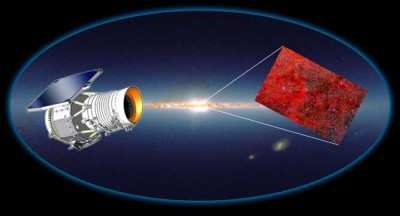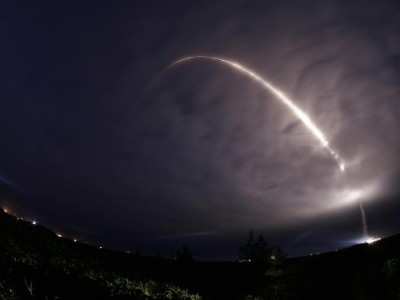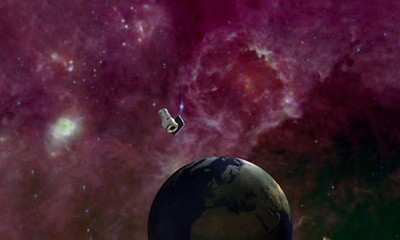WISE Begins All-Sky Survey Mission
NASA's Wide-field Infrared Survey Explorer, or WISE, lifted off
over the Pacific Ocean this morning on its way to map the entire
sky in infrared light. A Delta II rocket carrying the spacecraft
launched at 0909 EST from Vandenberg Air Force Base in California.
The rocket deposited WISE into a polar orbit 326 miles above
Earth.

"WISE thundered overhead, lighting up the pre-dawn skies," said
William Irace, the mission's project manager at NASA's Jet
Propulsion Laboratory in Pasadena, CA. "All systems are looking
good, and we are on our way to seeing the entire infrared sky
better than ever before."
Engineers acquired a signal from the spacecraft via NASA's
Tracking and Data Relay Satellite System just 10 seconds after the
spacecraft separated from the rocket. Approximately three minutes
later, WISE reoriented itself with its solar panels facing the sun
to generate its own power. The next major event occurred about 17
minutes later. Valves on the cryostat, a chamber of super-cold
hydrogen ice that cools the WISE instrument, opened. Because the
instrument sees the infrared, or heat, signatures of objects, it
must be kept at chilly temperatures -- its coldest detectors are
less than minus 447 degrees Fahrenheit.

WISE Launch NASA Photo
"WISE needs to be colder than the objects it's observing," said
Ned Wright of UCLA, the mission's principal investigator. "Now
we're ready to see the infrared glow from hundreds of thousands of
asteroids, and hundreds of millions of stars and galaxies."
With the spacecraft stable, cold and communicating with mission
controllers at JPL, a month-long checkout and calibration is under
way.
WISE will see the infrared colors of the whole sky with
sensitivity and resolution far better than the last infrared sky
survey, performed 26 years ago. The space telescope will spend nine
months scanning the sky once, then one-half the sky a second time.
The primary mission will end when WISE's frozen hydrogen runs out,
about 10 months after launch.
Just about everything in the universe glows in infrared, which
means the mission will catalog a variety of astronomical
targets.
Near-Earth asteroids, stars, planet-forming disks and distant
galaxies all will be easy for the mission to see. Hundreds of
millions of objects will populate the WISE atlas, providing
astronomers and other space missions, such as NASA's planned James
Webb Space Telescope, with a long-lasting infrared roadmap.

Artists Concept
JPL manages the Wide-field Infrared Survey Explorer for NASA's
Science Mission Directorate in Washington. The mission was
competitively selected under the Explorers Program, managed by
NASA's Goddard Space Flight Center in Greenbelt, MD. The science
instrument was built by the Space Dynamics Laboratory in Logan,
Utah, and the spacecraft was built by Ball Aerospace &
Technologies Corp. in Boulder, CO. Science operations and data
processing take place at the Infrared Processing and Analysis
Center at the California Institute of Technology in Pasadena.
NASA's Launch Services Program at NASA's Kennedy Space Center, FL,
managed the payload integration and the launch service.
 ANN's Daily Aero-Term (05.10.24): Takeoff Roll
ANN's Daily Aero-Term (05.10.24): Takeoff Roll Aero-News: Quote of the Day (05.10.24)
Aero-News: Quote of the Day (05.10.24) Aero-News: Quote of the Day (05.11.24)
Aero-News: Quote of the Day (05.11.24) ANN's Daily Aero-Term (05.11.24): IDENT Feature
ANN's Daily Aero-Term (05.11.24): IDENT Feature ANN's Daily Aero-Linx (05.11.24)
ANN's Daily Aero-Linx (05.11.24)





